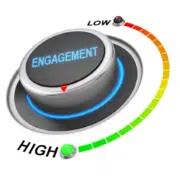Storytelling is Vital for Economic Development Organizations
Economic development is the lifeblood to a region’s vitality and storytelling often gets a bad rap as “soft” marketing versus the more aggressive approach many ED organizations are known for overall.
From chambers of commerce, economic development councils, industrial parks, associations, and municipalities and others, these organizations promote opportunities, drive investment, and share successes to enhance it. And, at the heart of any decision-making by companies and/or businesses to grow or relocate is the need to understand the differentiators of the community or area in which they are moving.
By translating data into compelling stories and key features into attractive communications, you can more powerfully highlight industries, communities, and regions. Following are some best practices from our experience in economic development marketing:
Make your website work for you.
We consider a website as the virtual front door for any organization and especially for economic development organizations who are oftentimes attracting companies from across the country or the world. Take a new, real look at your website from an objective standpoint – and look at some of your competitors’ websites, too. Is the content pushing what you want prospects to know or information that site selectors and businesses are seeking? Determine the key search terms and language that rank highest for the industries you are trying to attract and ensure it is embedded in your site through authentic content. Your website can tell your story in an effective and impactful manner.
Communicate to your current community.
Too often, economic development organizations spend more time communicating with prospects than with current businesses or tenants. In our experience, current clients are often looking to grow and, as importantly, know about businesses who are seeking new locations more than your business development team can identify on their own. Ensure your features and differentiators are continually communicated to your current community. Not only is it a pride factor for them to be engaged with you, but it’s easier for them to share the news with others. Share stories of your customers/communities so that others can be your ambassadors as well.
Focus on retention.
As an add-on to the previous point, make sure to focus time on current client retention. According to the Harvard Business Review, its anywhere from five to 25 times less expensive to retain an existing customer than it is to acquire a new one. If you haven’t already begun (or had to put on hold) customer retention meetings, plan to (re)start them now. You’ll gain incredible insight from their input of what is going well – and what isn’t (which is even more powerful to know), any future growth plans or needs, referrals for businesses and contacts they have, and advice of what your organization can/should highlight as a benefit. Ensure your findings are shared back with your constituents and can be told through numerous other communications materials.
Identify the appropriate marketing efforts.
Narrow down your focus and approach your communications in phases. Start with those tools which most prospects will see such as your website and/or public relations efforts through key industry and/or site selector publications. Other initiatives can/should include social media vehicles (specifically LinkedIn for business audiences), marketing collateral, and videos. Also, we strongly suggest investing, and have seen considerable impact, from marketing campaigns that help define you and share your story as well as digital marketing efforts which allow you to specifically target key audiences.
The site selector and tradeshows/conferences from yesterday are less impactful these days so identifying how to tell your story to the appropriate audiences on an ongoing basis is critical. Good economic development strategy is a team sport, and Chartwell Agency is a powerful communications player to assist you.









